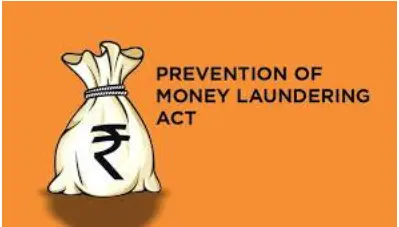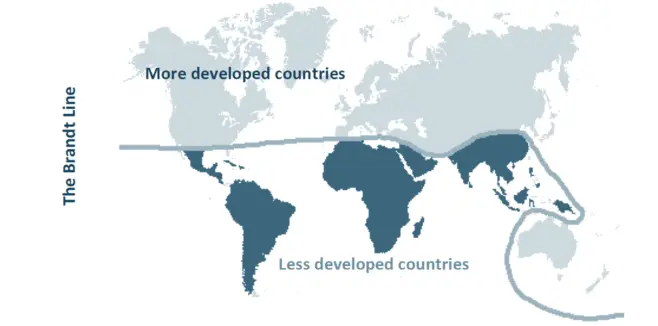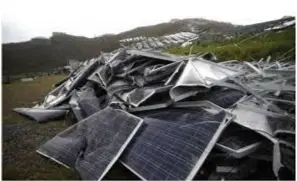Wednesday, 10th April 2024
World Anti-Doping Report 2022
In News: The World Anti-Doping Agency (WADA) anti-doping report for 2022, recently released, presents alarming statistics on global doping violations. This underscores the urgent need for stringent measures to uphold the integrity of sports.
Key Findings of the Report
- India Leads Globally in Doping Offences
- India accounts for the highest percentage of doping offenders, with 3.26% of tested athletes returning positive results.
- Out of 3,865 samples tested by India's National Anti-Doping Agency (NADA), 125 were Adverse Analytical Findings (AAFs), the highest among nations testing over 2,000 samples.
- Comparison with Other Nations
- South Africa follows India with 2.09% of samples testing positive.
- Despite testing fewer samples, India surpasses major sporting nations like Russia, the USA, Italy, and France in doping violations.
- Overall Increase in Testing and AAFs
- WADA reported a 6.4% increase in samples analyzed in 2022 compared to 2021.
- Percentage of AAFs rose from 0.65% to 0.77%.
- WADA emphasized the importance of intelligence-led strategic testing and values-based education to combat doping effectively.
Implications for India
- Concerns Regarding Athletes
- Doping poses serious health risks and hampers athletes' physical and mental development.
- Measures must be implemented to prioritize athletes' well-being and promote a clean sports culture.
- Reputation Damage
- India's high doping offenders percentage tarnishes its reputation in international sports.
- Trust in Indian athletes and their achievements may diminish, impacting India's credibility globally.
- Olympic 2024
- High doping violations may risk disqualification for Indian athletes in the upcoming Olympics.
- Urgent action is needed to ensure clean participation and avoid repercussions.
- Discrepancies in Testing Efforts
- Despite increased testing, India lags behind countries like China in producing positive results.
- Comprehensive measures are necessary to address the disparity.
- Regulatory Oversight
- India's position at the top of the doping offenders list indicates systemic issues in its anti-doping framework.
- Strengthening regulatory frameworks and monitoring mechanisms is imperative.
- Economic Impact
- Doping crises could negatively affect sponsorships, investments, and revenue streams in Indian sports.
- Upholding integrity is crucial for sustaining India's sports industry and economy.
Anti-Doping Initiatives in India
- National Anti-Doping Agency (NADA)
- NADA, established in 2005, coordinates India's anti-doping activities.
- It operates under the World Anti-Doping Agency (WADA) code and regulations.
- National Anti-Doping Act 2022
- Provides legal backing to NADA's anti-doping efforts.
- Aims to maintain integrity in sports competitions domestically and internationally.
- National Dope Testing Laboratories (NDTL)
- Conducts sample analysis and research in doping.
- WADA-accredited for quality and accuracy.
Way Forward
- Increased Vigilance
- Enhance testing efforts to detect and deter doping among athletes.
- Collaboration among stakeholders is crucial in tackling the issue effectively.
- China's Approach
- Consider criminalizing doping with strict penalties, as done in China.
- Strict penalties have proven effective in reducing doping cases.
- Education
- Educate athletes about the dangers of doping and provide guidance on supplements.
- Doping Detection
- Develop and implement new technologies to stay ahead of evolving doping methods.
- Use athlete data and competition trends to target high-risk areas effectively.
|
UPSC Previous Year Questions Mains (2014) Q. An athlete participates in the Olympics for personal triumph and nation’s glory; victors are showered with cash incentives by various agencies, on their return. Discuss the merit of state sponsored talent hunt and its cultivation as against the rationale of a reward mechanism as encouragement. |
Source: BS
Semiconductor Chip Manufacturing Technology
In News: Recently, the TATA Group entered into a collaboration with Taiwan's PSMC to establish a 300 mm wafer fabrication plant in Gujarat. The collaboration aims to launch the initial 28 nm chip by 2026.

Understanding Semiconductor Chip
- Semiconductor
- Semiconductors exhibit electrical conductivity properties between conductors and insulators.
- Dopants can modify their conductivity.
- Semiconductor Chips
- Tiny electronic devices made of semiconductor material like silicon or germanium.
- Basic building blocks of electronic circuits, containing billions of microscopic switches.
- Silicon wafers etched with tiny transistors form the foundation of these chips.
- Performs various functions like data processing, information storage, and device control.
- Critical component in modern electronic devices like smartphones and computers.
- Transistor
- Fundamental components of semiconductor devices amplifying or switching electronic signals.
- Building blocks of modern electronic devices used in amplifiers, switches, and digital circuits.
- Fabrication Technology
- Process of creating semiconductor devices like chips and transistors.
- Involves wafer preparation, photolithography, etching, doping, and packaging.
- Wafer
- Thin slice of semiconductor material (e.g., crystalline silicon) for fabricating integrated circuits.
- Semiconductor chips are produced by printing an array of chips on a circular semiconductor wafer.
Status of India’s Semiconductor Ecosystem
- Market Potential
- India's large population and growing middle class drive demand for semiconductor products.
- Projected semiconductor market to reach $55 billion by 2026, indicating significant growth potential.
- Talent Pool
- Emphasis on skill development and innovation fosters domestic chip design skills.
- Established chip design industry since the 1990s provides opportunities for professionals.
- Government Support
- Government initiatives promote domestic manufacturing to reduce dependence on imports.
- Incentives and policies encourage investment in semiconductor infrastructure and research.
- Industry Collaboration
- Collaboration between government, academia, and industry fosters innovation and skill development.
- Joint ventures and partnerships accelerate semiconductor ecosystem growth.
- Research and Development
- Focus on R&D to develop indigenous semiconductor technologies and fabrication capabilities.
- Investment in research institutions and startups to drive innovation in semiconductor sector.
- Infrastructure Development
- Infrastructure development initiatives to support semiconductor manufacturing and testing facilities.
- Investment in semiconductor parks and clusters to create a conducive environment for industry growth.
|
UPSC Previous Year Questions Prelims (2008) Q. Which one of the following laser types is used in a laser printer? (a) Dye laser Ans: (c) |
Source: TH
Constitutional Morality
In News: The recent detention of a current chief minister over allegations of corruption has prompted legal, political, and constitutional debates, prompting inquiries into its alignment with constitutional morality, particularly within a parliamentary democracy such as India.
Understanding Constitutional Morality
- Definition and Origin
- Constitutional morality (CM) is a concept referring to the guiding principles and values of a constitution.
- Originated from British Classicist George Grote in the 19th century.
- Dr. B.R. Ambedkar introduced it in India.
- Pillars of Constitutional Morality
- Constitutional Values: Upholding justice, liberty, equality, fraternity, secularism, and individual dignity.
- Rule of Law: Ensuring accountability under the law for all, including government officials.
- Democratic Principles: Facilitating participatory democracy and holding representatives accountable.
- Fundamental Rights: Protecting rights like equality, freedom of speech, and right to life.
- Separation of Powers: Maintaining balance between legislative, executive, and judicial branches.
- Checks and Balances: Preventing abuse of power through institutional mechanisms.
- Constitutional Interpretation: Adapting the constitution to societal changes while preserving its values.
- Ethical Governance: Upholding integrity, transparency, and accountability in public service.
Constitutional Morality in Indian Context
- Implicit in Indian Constitution's core principles of justice, equality, and liberty.
- Reflected in Supreme Court judgments safeguarding constitutional values.
Key Judicial Decisions Upholding Constitutional Morality
- Kesavananda Bharati v. State of Kerala, 1973
- SP Gupta Case (First Judges Case), 1982
- Naz Foundation v. Government of NCT of Delhi, 2009
- Manoj Narula v. Union of India, 2014
- Indian Young Lawyers Association v. State of Kerala (Sabarimala Case), 2018
- Navtej Singh Johar v. Union of India, 2018
Challenges to Constitutional Morality in India
- Political Interference
- Judicial Activism vs. Judicial Restraint
- Enforcement and Compliance
Way Forward
- Strengthening Institutions
- Promoting Civic Education
- Enhancing Access to Justice
- Encouraging Ethical Leadership
- Adapting to Evolving Challenges
Source: IE
Black Swan Events
In News: In his speech at the Defence Services Staff College in Wellington, Army Chief Gen Manoj Pande emphasized the importance of constant preparedness for 'black swan' events.

Understanding Black Swan Events
- Definition and Origin
- Black swan events are rare, unpredictable occurrences with significant societal or global impacts.
- Coined by Nassim Nicholas Taleb in 2001 and popularized in his book "The Black Swan: The Impact of the Highly Improbable" in 2007.
- Characteristics
- Extremely rare and unexpected, lying outside regular expectations.
- Cause severe impact upon occurrence.
- In hindsight, seem plausible with explanations.
- Implications
- Disruption:
- They disrupt economies, industries, and societies on a large scale.
- Result in sudden and unexpected changes in financial markets and daily life.
- Uncertainty:
- Introduce high levels of uncertainty, challenging planning and decision-making.
- Vulnerability:
- Reveal vulnerabilities in previously deemed robust systems.
- Highlight weaknesses in risk management practices, necessitating preparedness and resilience.
- Reassessment of Risk:
- Prompt a reassessment of risks across various domains.
- Increase awareness of overlooked risks, leading to mitigation efforts.
- Regulatory and Policy Responses:
- Governments and regulatory bodies may introduce new regulations or policies to prevent or mitigate future occurrences.
- Behavioral Changes:
- Lead to changes in behavior and attitudes as individuals and organizations adapt to the new reality.
- Disruption:
Examples of Black Swan Events
- Terrorist Attacks on New York’s World Trade Center on September 11, 2001.
- The 2008 Financial Crisis.
- The COVID-19 Pandemic.
- The Dot-com Bubble Burst.
- Brexit.
Key Highlights of the Speech of Army Chief
- Preparedness against Black Swan Events:
- Emphasized the need for constant preparedness and expectation of the unexpected.
- Caution against Weaponization of Technology:
- Highlighted the spread of technology across various domains and its potential weaponization.
- Importance of Jointness among the Three Forces:
- Emphasized cross-functional synergy among the army, navy, and air force for effective threat assessment and response.
- Expansion of Warfare into New Domains:
- Discussed the expansion of warfare into space, cyber, electromagnetic spectrum, and information technology.
- 2024 as the Year of Technology Absorption:
- Outlined the army's initiatives to absorb technology, making 2024 the "year of technology absorption."
Source: ET
Lavender Cultivation
In News: Officials report that over 700 acres of farmland in the Jammu and Kashmir area have been dedicated to lavender cultivation since 2017, with an additional 100 acres slated to be incorporated.

Lavender Cultivation: Introduction, Conditions, and Applications
- Lavender, originally native to Europe, found its way into the temperate regions of Jammu & Kashmir state through the efforts of the CSIR Aroma Mission. This small, perennial aromatic herb shrub serves various industries, including fragrance, specialty food, and alternative medicine.
- Propagation of lavender can be achieved through several methods, including seeds, rooted cuttings, tissue culture, and layering.
- For successful cultivation, specific climatic conditions are necessary. Lavender thrives in light, well-aerated soil rich in organic matter, preferably neutral to alkaline with good drainage. While sensitive to waterlogging, lavender can adapt to poor or eroded soil conditions. Adequate annual rainfall, ranging from 300 to 1400 mm, supports its growth.
- Lavender is resilient, capable of withstanding drought and frost conditions. It flourishes in cool winters and cool summers, requiring ample sunlight for optimal growth. Surprisingly, it can even be cultivated in areas experiencing snowfall and possessing hilly terrain.
- Applications of lavender span various industries, including food and flavoring, pharmaceutical and therapeutic, cosmetic, and industrial purposes.
Source: IE
Neptis Philyra
In News: In a recent discovery, the rare butterfly species Neptis philyra was found for the first time in India, specifically in the Tale Valley Wildlife Sanctuary.
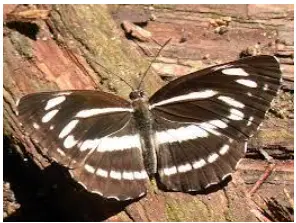
About Neptis Philyra
- Neptis Philyra, commonly known as the long-streak sailor, is a rare species of butterfly primarily found in various regions of East Asia, including eastern Siberia, Korea, Japan, and central and southwest China.
- Its wings are serrated, displaying rich brownish-black coloring on the upper side and yellow-brown on the underside, with distinctive markings including a white cell streak forming a "hockey stick" pattern on the forewing.
- This butterfly species, belonging to the Nymphalidae family, typically inhabits environments such as evergreen forests, riverine vegetation, and rocky streams.
Key Facts about Tale Valley Wildlife Sanctuary
- Located near the picturesque Apatani cultural landscape in the Lower Subansiri District of Arunachal Pradesh, the sanctuary is traversed by rivers like Pange, Sipu, Karing, and Subansiri.
- Its flora encompasses a diverse range of subtropical and alpine forests, including silver fir trees, ferns, orchids, bamboo, and rhododendron.
- The sanctuary also hosts various fauna species such as the clouded leopard, Himalayan squirrel, and Himalayan black bear.
Source: TOI
Predicate Offences
In News: Recently, the Supreme Court dismissed a money laundering case, emphasizing the absence of a predicate offence and the lack of proceeds of crime in the matter.
Understanding Predicate Offences and Their Significance in the Context of Money Laundering
- A predicate offence constitutes a fundamental element within a broader criminal activity, commonly associated with money laundering or organised crime. It serves as the initial illegal act that generates proceeds or funds for subsequent illicit activities. Typically, the term "predicate offence" is applied in the context of money laundering or terrorist financing endeavors.
- In the realm of the Prevention of Money Laundering Act (PMLA), the concept of predicate offences is pivotal. The legislative rationale behind identifying predicate offences under the PMLA aims not only to combat unlawfully acquired wealth but also to address income that is legitimately obtained yet concealed from regulatory scrutiny.
- The PMLA delineates specific offences as predicate offences through its Schedule, which comprises three parts: Part A, Part B, and Part C.
- Part A of the Schedule delineates offences under the Indian Penal Code (IPC) that are classified as predicate offences. These encompass a wide array of criminal activities, ranging from criminal conspiracy and acts of terrorism to extortion, robbery, forgery, cheating, and more, reflecting the diverse spectrum of illicit conduct.
- Part B of the Schedule pertains to offences under the Customs Act that qualify as predicate offences if their value exceeds one crore rupees. This section primarily addresses violations related to customs duties and regulations, particularly focusing on significant breaches with substantial financial implications.
- Part C of the Schedule encompasses offences with cross-border ramifications, encompassing not only the offences listed in Part A but also those against property outlined in Chapter XVII of the Indian Penal Code. Additionally, it includes the deliberate evasion of taxes, penalties, or interest under the Black Money (Undisclosed Foreign Income and Assets) and Imposition of Tax Act, 2015.
- In a significant legal interpretation, the Supreme Court has underscored that the absence of a predicate offence precludes the existence of proceeds of crime, thereby precluding the possibility of money laundering. This reaffirms the crucial link between predicate offences and the subsequent laundering of illicit proceeds, highlighting their indispensable role in combating financial crimes.
Source: TOI
TSAT-1A
In News: TASL announces successful deployment of sub-metre resolution optical satellite TSAT-1A
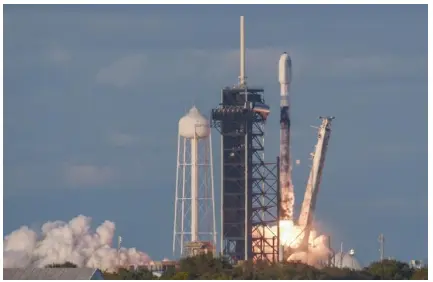
Overview of TSAT-1A
- TSAT-1A is an optical sub-metre-resolution Earth observation satellite developed through collaboration between Tata Advanced Systems Limited (TASL) and Latin American company Satellogic Inc.
- Constructed at TASL's Assembly, Integration, and Testing (AIT) plant in Vemagal, Karnataka, TSAT-1A was launched aboard SpaceX's Falcon 9 rocket from the Kennedy Space Center, Florida, USA.
Key Features
- TSAT-1A specializes in capturing military-grade imagery of Earth's surface with sub-meter resolution, offering precise details.
- Equipped with both multispectral and hyperspectral imaging capabilities, TSAT-1A can gather data across various wavelengths, enhancing insights into land, water, and natural resources.
- With enhanced collection capacity, a broader dynamic range, and low-latency data delivery, TSAT-1A provides advanced capabilities.
Usage
- The satellite serves Indian defense forces by providing discreet information, which can be shared with allied nations.
- It aids in improving defense preparedness, response capabilities, and strategic decision-making processes.
Significance
- While India has developed military spy satellites through ISRO, TSAT-1A marks the first private sector initiative in this domain.
Source: TH
Peace Clause
In News: India has activated the peace clause at the World Trade Organization (WTO) for the fifth consecutive occasion, citing the breach of the prescribed subsidy threshold for rice provided to its farmers.
Understanding the Peace Clause
- The Peace Clause, established under WTO agreements, entails that member nations refrain from disputing any breach of the prescribed subsidy limit by a developing country at the WTO's dispute settlement forum.
- Subsidies exceeding the prescribed ceiling are deemed trade-distorting, hence the need for regulation.
- The subsidy ceiling dictates that a WTO member's food subsidy expenditure should not surpass 10 percent of the value of production, based on the reference price of 1986-88.
- India has advocated for amendments to the formula used for calculating this food subsidy cap.
- As an interim measure, WTO members agreed to implement the Peace Clause at the Bali ministerial meeting in December 2013. This commitment included negotiations for a permanent solution.
- The Peace Clause remains effective until a permanent resolution to the food stockpiling issue is reached.
- While providing leeway for developing countries to surpass the 10% ceiling without facing legal repercussions, the Peace Clause imposes stringent notification requirements and conditions. These conditions include refraining from distorting global trade and ensuring that the food security of other members is not compromised.
Source: BS
Partnership Firms
In News: Recently, the Supreme Court ruled that the legal heirs of a deceased partner are not held liable for any debts or obligations of the partnership firm following the partner's death.
Understanding Partnership Firms and Limited Liability Partnerships (LLPs)
- A partnership firm is a business entity formed when two or more individuals come together to manage and operate a business, pooling their resources, knowledge, and skills to achieve common business goals.
- This form of business is favored for its simplicity and ease of formation, encompassing various trades, occupations, and professions.
- A partnership must meet three essential criteria: it must result from an agreement between the partners, involve sharing profits, and be managed by one or more partners representing the rest.
- These conditions must all be met for a partnership to exist.
- The Indian Partnership Act of 1932 governs and regulates partnership firms in India, defining partnership as a profit-sharing relationship between two or more partners.
- The rights, duties, and profit-sharing arrangements among partners are typically outlined in a Partnership Agreement. There are three main types of partnerships:
- General Partnership: In a general partnership, all partners have equal rights and participate in decision-making and management. Partners contribute capital, skills, and labor to achieve the firm’s financial objectives. Each partner has unlimited liability and the authority to make decisions regarding the firm’s operations.
- Partnership at Will: Partnership at will, as defined by Section 7 of the Indian Partnership Act, occurs when there is no fixed duration or predetermined end for the partnership. Two essential conditions for partnership at will are the absence of a specified partnership duration and no predetermined end to the partnership.
- Particular Partnership: A particular partnership is formed to manage and run a specific business or venture. Once the purpose of the partnership is fulfilled, it can be dissolved unless the partners agree otherwise. If there is no agreement, the particular partnership dissolves upon achieving its objective.
- The rights, duties, and profit-sharing arrangements among partners are typically outlined in a Partnership Agreement. There are three main types of partnerships:
- Additionally, there is the concept of a Limited Liability Partnership (LLP), which combines the benefits of a partnership firm and a company.
- An LLP is a separate legal entity capable of owning property in its own name and being liable solely for its own obligations.
- Partner liability in an LLP is limited to their contribution to the LLP, protecting partners from personal liability for outside creditors.
Source: LL
Marching ahead with technology absorption
In News: The article delves into the urgent need to modernize the Indian Defence Sector. Despite positive strides made by the Indian military, the challenge lies in effectively integrating technology while understanding nuanced requirements.
Different Aspects of Disruptive Technology in the Defence Sector
- About Disruptive Technology
- Disruptive technology refers to innovations that significantly alter existing industries or sectors, rendering previous technologies obsolete and reshaping traditional practices.
- Characteristics
- Game-Changing Impact: Disruptive technologies revolutionize warfare by introducing novel capabilities or approaches that significantly alter the balance of power on the battlefield.
- Rapid Advancement: Emerging from fields like AI, robotics, cybersecurity, nanotechnology, and biotechnology, disruptive technologies lead to exponential improvements in military capabilities.
- Cost-Efficiency: These technologies offer cost-effective solutions compared to traditional systems, enabling militaries to achieve greater effectiveness with reduced resources.
Examples of Disruptive Technologies
- Unmanned Aerial Vehicles (UAVs): Revolutionizing military reconnaissance, surveillance, and strike capabilities with real-time intelligence gathering, precision targeting, and operational flexibility.
- Cyber Warfare: Using computer networks to disrupt, disable, or sabotage enemy systems and infrastructure, posing significant threats to national security.
- Hypersonic Weapons: Traveling at speeds exceeding Mach 5, these weapons provide rapid-strike capabilities against distant targets, challenging conventional warfare dynamics.
Impact on Military Operations
- Enhanced Situational Awareness: Advanced sensors, data analytics, and AI improve military's situational awareness, enabling informed decisions and adaptability.
- Precision and Lethality: Precision-guided munitions, autonomous systems, and enhanced targeting capabilities ensure greater accuracy and lethality in military operations.
- Asymmetric Warfare: Technologically advanced forces utilize asymmetric warfare tactics like cyberattacks, drone swarms, and electronic warfare to challenge conventional military powers.
Relevance of Atmanirbhar Bharat in Modernising Defence Sector
- About Atmanirbhar Bharat
- Atmanirbhar Bharat aims at self-reliance, reducing dependence on imports, and strengthening domestic manufacturing capabilities in various sectors, including defence.
- Key Initiatives
- Defence Acquisition Procedure (DAP) - 2020: Prescribes 50% indigenous content in procurement contracts, encouraging foreign OEMs to set up facilities in India.
- Positive Indigenisation Lists: Specify items to be procured only from domestic sources, promoting indigenous production.
- Make-In-India in Defence Sector: Classifies capital acquisition as 'Indian' or 'Not-Indian,' prioritizing products designed, developed, and manufactured in India.
Different Technology Absorption Routes in Defence Sector
- Co-development and Co-production
- Joint programs with access to technologies otherwise unattainable, reducing costs and time.
- Sub-Contracting / Contract Manufacturing
- Foreign vendors procure components from local industries to meet offset obligations.
- Joint Ventures
- Establishment of JVs for technology inflows, but foreign equity restrictions may hinder cutting-edge technology transfer.
- Licensed Production
- Transfer of technology to local industries capable of absorption, facilitating further development.
- Maintenance ToT and Training
- Training local partners in maintenance ensures effective support, fostering partnerships for Maintenance Repair and Overhaul (MRO) facilities.
Challenges in Absorption of Technology in the Defence Sector
- Low R&D Expenditure
- India's insufficient focus on defence R&D and low researcher density hinder breakthrough technology development.
- Ineffective Relevance and Depth of Technology
- Foreign offers may not align with current and future defence needs, requiring careful scrutiny.
- Licensing Issues
- Foreign governments' approval requirements and reluctance to share cutting-edge technology impede technology transfer.
- Cybersecurity Vulnerabilities
- Growing reliance on digital technologies exposes defence sector to cyber threats due to inadequate frameworks and preparedness.
- Technological Obsolescence
- Delayed modernization and limited technology transfer hamper indigenous defence technology development.
Suggestions to Ensure Smooth Technology Absorption
- Technological, Operational, and Tactical Adaptations
- Operational and tactical changes complement technological advancements, ensuring survivability and integration of capabilities.
- Technological Progress, Together with Conventional Methods
- Acknowledging vulnerabilities and leveraging technology while consolidating traditional defence lines and strengthening the military industrial base.
- Understanding the Potential of Latest Technologies
- Comprehending the latest technologies and their applicability, democratically employing technology at all levels for true transformation.
- Multiple Aspects Inclusive Technology Absorption
- Addressing organizational, HR, and policy considerations alongside technology absorption for effective integration.
- Harnessing Potential of iDEX and DISC
- Leveraging initiatives like iDEX and DISC to mobilize the Indian startup ecosystem for defence product development.
Conclusion
Successful technology absorption in defence necessitates a holistic approach addressing technological, organizational, and policy challenges. By prioritizing indigenous production, strengthening R&D, and fostering partnerships, defence establishments can effectively integrate new technologies, enhancing capabilities in an evolving security landscape.
|
UPSC Previous Year Questions Prelims (2017) Q. Consider the following in respect of Indian Ocean Naval Symposium (IONS):
Which of the above statements is/are correct? (a) 1 only Ans: (b) Prelims (2016) Q.2 Which one of the following is the best description of ‘INS Astradharini’, that was in the news recently? (a) Amphibious warfare ship Ans: (c) |
Source: TH
Share the article
Edukemy’s Current Affairs Quiz is published with multiple choice questions for UPSC exams
MCQ
Get Latest Updates on Offers, Event dates, and free Mentorship sessions.

Get in touch with our Expert Academic Counsellors 👋
FAQs
UPSC Daily Current Affairs focuses on learning current events on a daily basis. An aspirant needs to study regular and updated information about current events, news, and relevant topics that are important for UPSC aspirants. It covers national and international affairs, government policies, socio-economic issues, science and technology advancements, and more.
UPSC Daily Current Affairs provides aspirants with a concise and comprehensive overview of the latest happenings and developments across various fields. It helps aspirants stay updated with current affairs and provides them with valuable insights and analysis, which are essential for answering questions in the UPSC examinations. It enhances their knowledge, analytical skills, and ability to connect current affairs with the UPSC syllabus.
UPSC Daily Current Affairs covers a wide range of topics, including politics, economics, science and technology, environment, social issues, governance, international relations, and more. It offers news summaries, in-depth analyses, editorials, opinion pieces, and relevant study materials. It also provides practice questions and quizzes to help aspirants test their understanding of current affairs.
Edukemy's UPSC Daily Current Affairs can be accessed through:
- UPSC Daily Current Affairs can be accessed through Current Affairs tab at the top of the Main Page of Edukemy.
- Edukemy Mobile app: The Daily Current Affairs can also be access through Edukemy Mobile App.
- Social media: Follow Edukemy’s official social media accounts or pages that provide UPSC Daily Current Affairs updates, including Facebook, Twitter, or Telegram channels.

